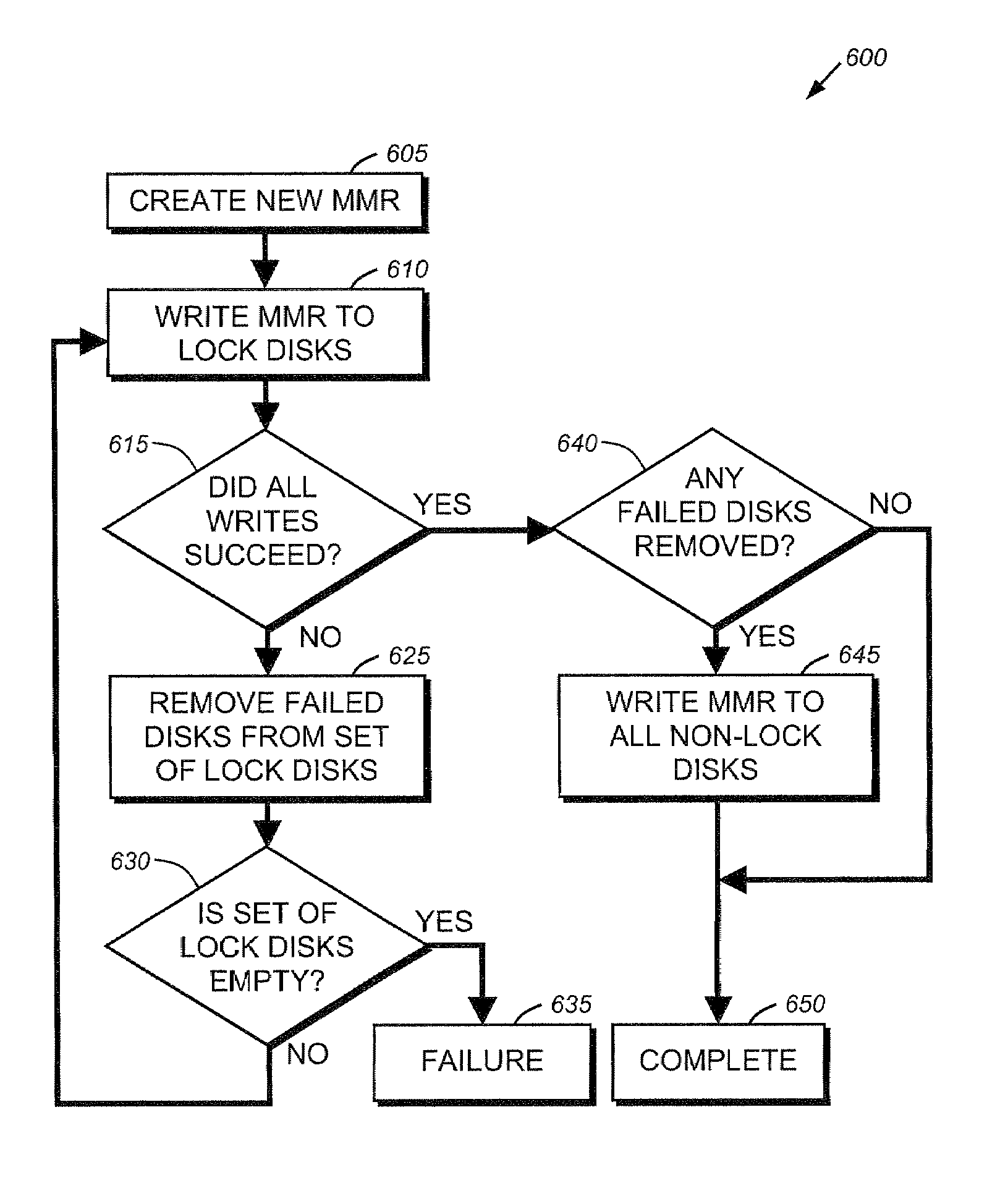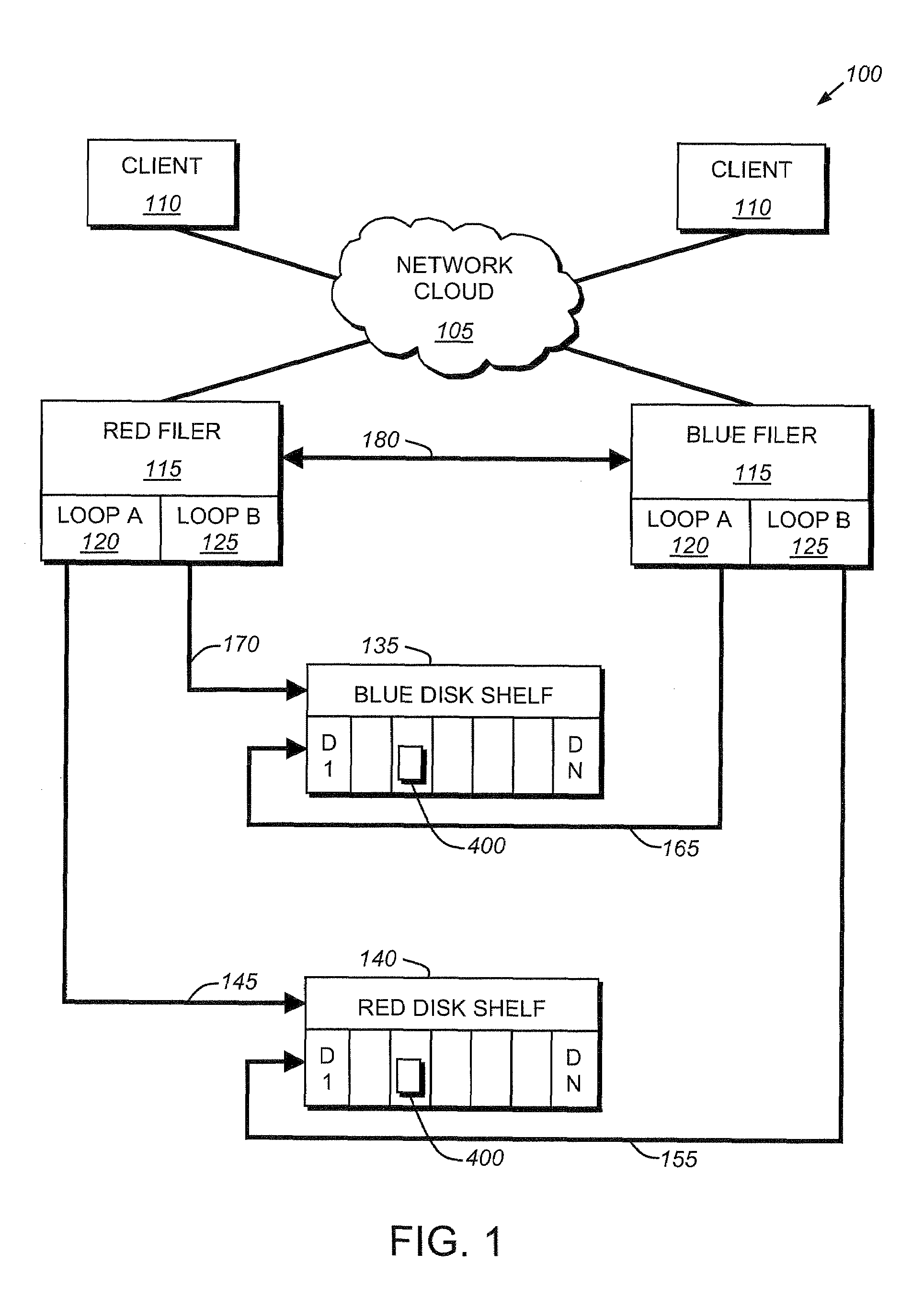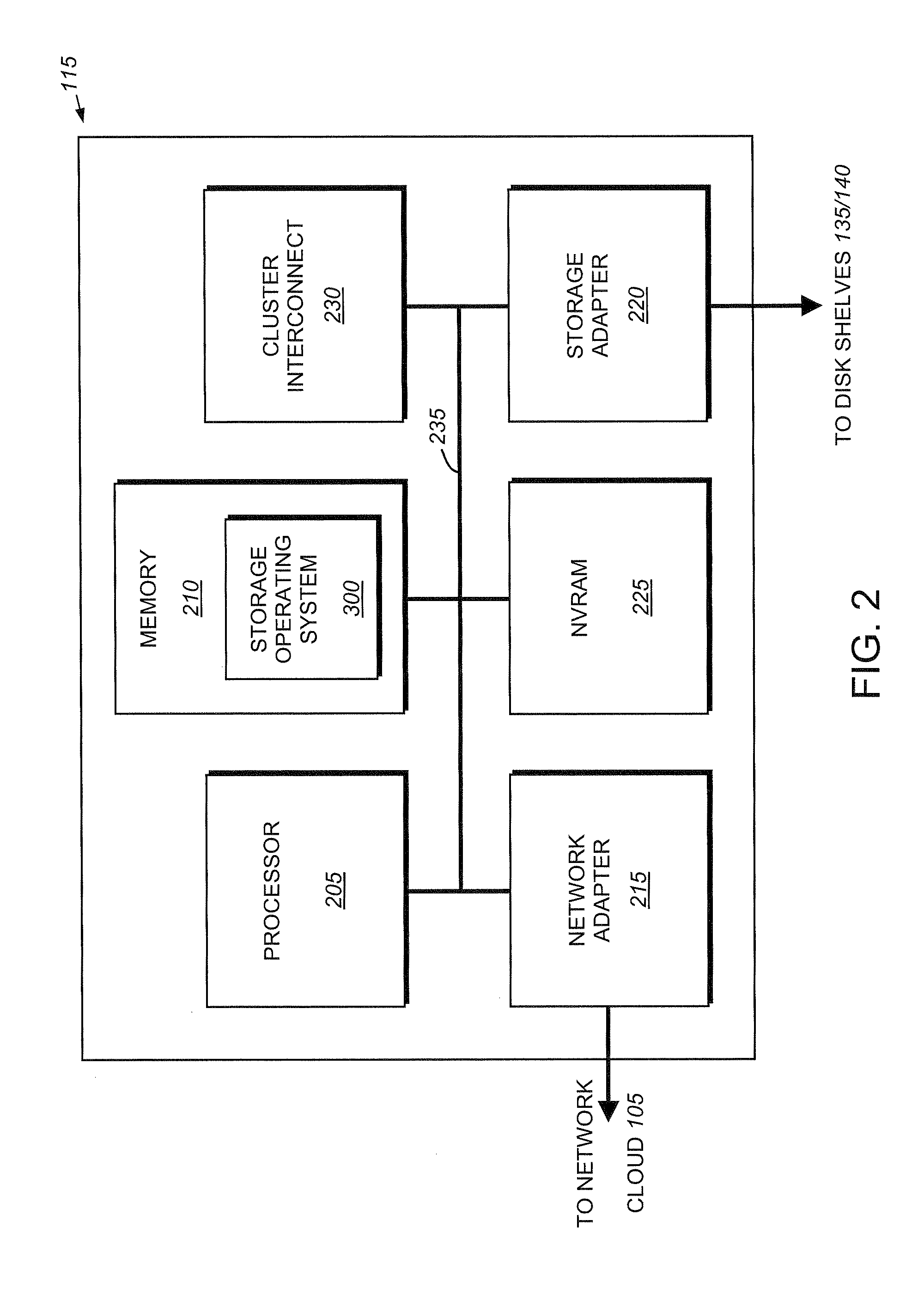System and method for coordinating cluster state information
a cluster state and information technology, applied in the field of clustered file servers, can solve the problems of component failure that would not prevent either filer from serving its normal workload, and initiation of a takeover process, so as to prevent data integrity loss
- Summary
- Abstract
- Description
- Claims
- Application Information
AI Technical Summary
Benefits of technology
Problems solved by technology
Method used
Image
Examples
Embodiment Construction
[0034]A. File Server Cluster Environment
[0035]FIG. 1 is a block diagram of a file server cluster environment 100 having connected as two nodes in the file system cluster two file servers 115. In accordance with known failover techniques, Red Filer and Blue Filer provide takeover protection to each other when one fails. It should be understood that while only two filers and two disk shelves are shown in this illustrative cluster configuration, it is expressly contemplated that multiple filers and disk shelves may be connected in a cluster configuration and provide takeover for each other.
[0036]A plurality of clients 110 are connected to a network cloud 105. The network cloud can be comprised of any acceptable networking architecture including, for example, a local area network (LAN), a wide area network (WAN), a virtual private network (VPN) or any other networking architecture including, for example the Internet. A set of file servers, or filers, is also connected to the network clo...
PUM
 Login to View More
Login to View More Abstract
Description
Claims
Application Information
 Login to View More
Login to View More - R&D
- Intellectual Property
- Life Sciences
- Materials
- Tech Scout
- Unparalleled Data Quality
- Higher Quality Content
- 60% Fewer Hallucinations
Browse by: Latest US Patents, China's latest patents, Technical Efficacy Thesaurus, Application Domain, Technology Topic, Popular Technical Reports.
© 2025 PatSnap. All rights reserved.Legal|Privacy policy|Modern Slavery Act Transparency Statement|Sitemap|About US| Contact US: help@patsnap.com



